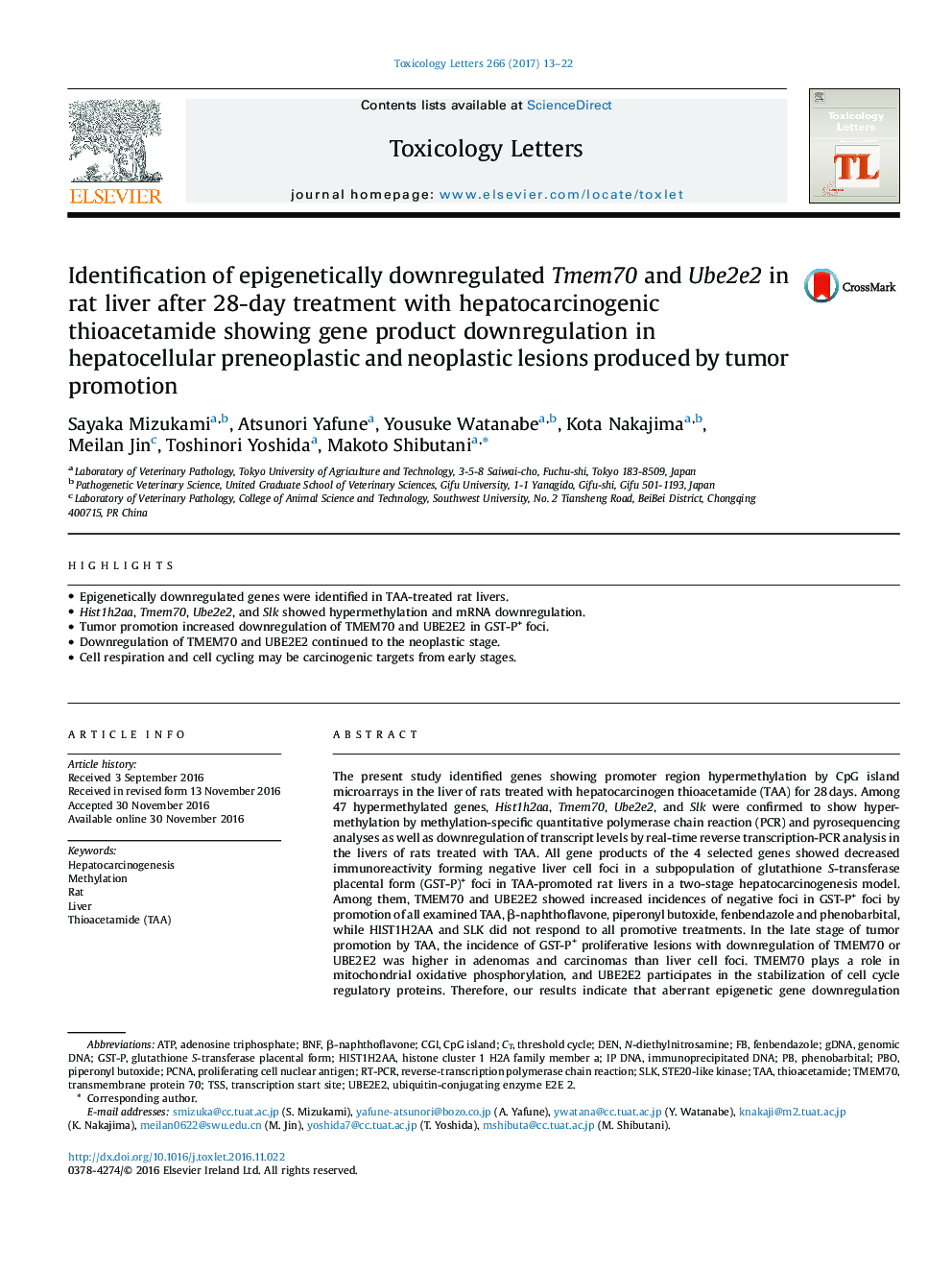| کد مقاله | کد نشریه | سال انتشار | مقاله انگلیسی | نسخه تمام متن |
|---|---|---|---|---|
| 5562197 | 1562607 | 2017 | 10 صفحه PDF | دانلود رایگان |

- Epigenetically downregulated genes were identified in TAA-treated rat livers.
- Hist1h2aa, Tmem70, Ube2e2, and Slk showed hypermethylation and mRNA downregulation.
- Tumor promotion increased downregulation of TMEM70 and UBE2E2 in GST-P+ foci.
- Downregulation of TMEM70 and UBE2E2 continued to the neoplastic stage.
- Cell respiration and cell cycling may be carcinogenic targets from early stages.
The present study identified genes showing promoter region hypermethylation by CpG island microarrays in the liver of rats treated with hepatocarcinogen thioacetamide (TAA) for 28 days. Among 47 hypermethylated genes, Hist1h2aa, Tmem70, Ube2e2, and Slk were confirmed to show hypermethylation by methylation-specific quantitative polymerase chain reaction (PCR) and pyrosequencing analyses as well as downregulation of transcript levels by real-time reverse transcription-PCR analysis in the livers of rats treated with TAA. All gene products of the 4 selected genes showed decreased immunoreactivity forming negative liver cell foci in a subpopulation of glutathione S-transferase placental form (GST-P)+ foci in TAA-promoted rat livers in a two-stage hepatocarcinogenesis model. Among them, TMEM70 and UBE2E2 showed increased incidences of negative foci in GST-P+ foci by promotion of all examined TAA, β-naphthoflavone, piperonyl butoxide, fenbendazole and phenobarbital, while HIST1H2AA and SLK did not respond to all promotive treatments. In the late stage of tumor promotion by TAA, the incidence of GST-P+ proliferative lesions with downregulation of TMEM70 or UBE2E2 was higher in adenomas and carcinomas than liver cell foci. TMEM70 plays a role in mitochondrial oxidative phosphorylation, and UBE2E2 participates in the stabilization of cell cycle regulatory proteins. Therefore, our results indicate that aberrant epigenetic gene downregulation suggestive of a metabolic shift of cellular respiration from oxidative phosphorylation to glycolysis and aberrant cell cycle regulation facilitating cell proliferation from as early as 28 days after hepatocarcinogen treatment contribute to tumor development.
Journal: Toxicology Letters - Volume 266, 15 January 2017, Pages 13-22